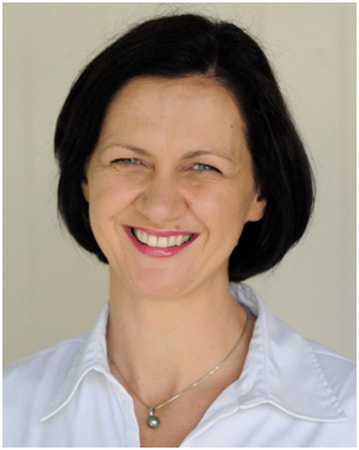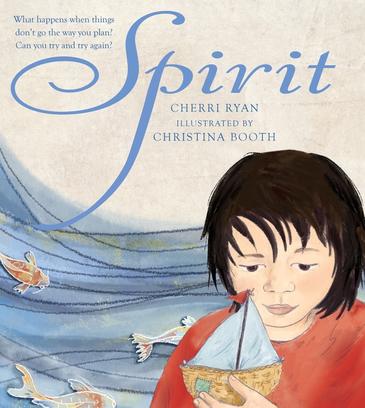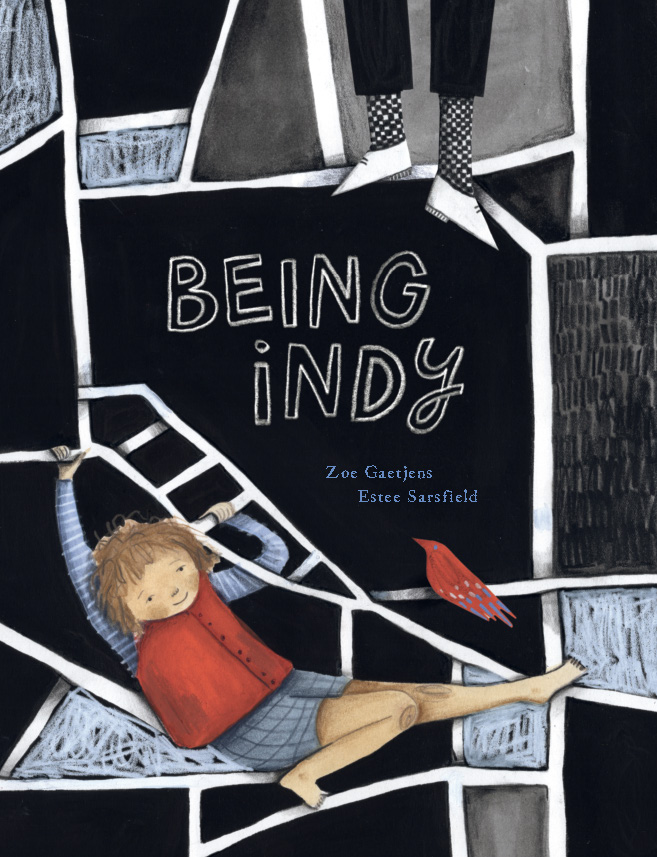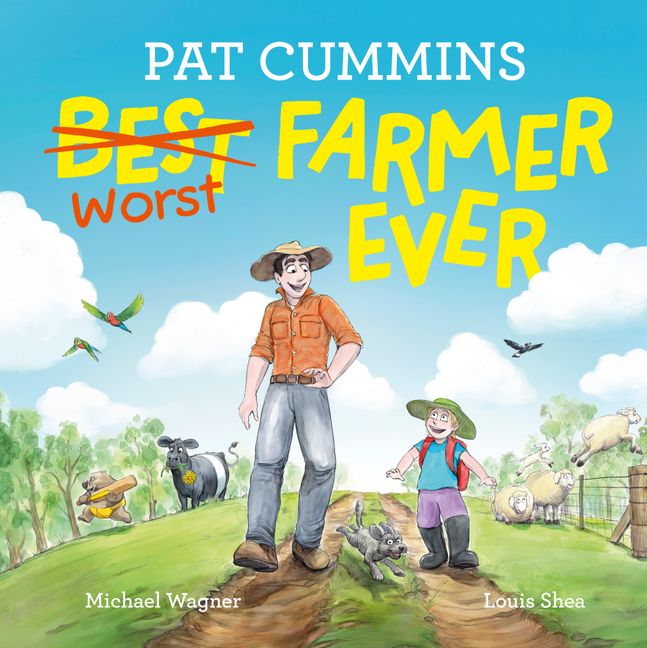
StoryLinks Interviews Cherri Ryan
by Mia Macrossan
 Cherri Ryan’s first picture book Spirit was published recently. Magnificently illustrated by Christina Booth it is the story of a little girl who builds a sail boat and calls it Spirit. She takes it for a trial in the garden pond. Spirit does well and that night the girl dreams of sailing her in the creek. From the creek the little boat graduates to the river where she comes to grief against a rock. The little girl finds her and mends her and stronger than ever before Spirit is ready for the next adventure. Christina Booth’s hand drawn digital media illustrations augment the spare text with character, imagination, emotion and even high drama.
Cherri Ryan’s first picture book Spirit was published recently. Magnificently illustrated by Christina Booth it is the story of a little girl who builds a sail boat and calls it Spirit. She takes it for a trial in the garden pond. Spirit does well and that night the girl dreams of sailing her in the creek. From the creek the little boat graduates to the river where she comes to grief against a rock. The little girl finds her and mends her and stronger than ever before Spirit is ready for the next adventure. Christina Booth’s hand drawn digital media illustrations augment the spare text with character, imagination, emotion and even high drama.
Spirit is a deceptively simple story about a boat being mended after each foray into the world but as the title indicates Spirit is also a parable for everyone who has ever set out into the perilous unknown seeking their destiny and as such is a positive message to children to persevere and believe in themselves and their dreams.
Cherri recently took the time to answer some questions about her book and her writing life for StoryLinks.
How long have you been writing for children?
I had been writing story ideas for many years, but I had always been hiding them in a shoebox. Then in 2010, I realised that I really wanted to turn those story ideas into stories to share and so I set about improving my writing and soon began to submit my work to publishers.
It is quite a career change from working in medicine. How do the two interact/complement/each other?
I studied medicine because I wanted to make people feel better and I particularly wanted to make children smile. I enjoyed working as a doctor in Australia for almost twenty years. Then I wanted to work in medical education, helping to train the doctors of tomorrow, which I still do today. Over all those years, my little dream of writing for children began to grow and grow, as I believe in the power of stories to bring joy and hope even in the most difficult times. Now I love to write stories filled with characters who are brave and fun and grasp life with both hands. I am particularly inspired by all the wonderful children and families I cared for.
What was your favourite book as a child?
I had many favourite books as a child. One of my all-time favourites is ‘The Monster at the End of this Book: starring lovable, furry, old Grover’. I absolutely loved how Grover talked to us, the readers, and how we were strong enough to break down brick walls just by turning the page.
Do you have any favourite writers? Any people you aspire to?
I have many favourites, particularly the writers and illustrators I know in the Australian Children’s Literature field. We all have a common goal of creating beautiful works for children and I admire many of my colleagues, who have now become friends. I particularly love the elegance of Carole Wilkinson’s writing, the humour of Andy Griffith’s, the world building in Jo Sandhu’s and Isobelle Carmody’s novels, the depth of Dimity Powell’s picture books and I could list so many more! I also love the illustration artwork of so many, including Christina Booth, Freya Blackwood, Jeannie Baker, Nikki Johnston, Penelope Pratley and many more.
What advice would you give to unpublished writers?
Persist and keep growing. You can do it.
What has helped you the most in getting your book published?
The CYA Conference in Brisbane has been very helpful in my journey to publication. I first attended in 2010 and every year since. It was at this conference that I had the chance to speak with many editors over the years, to attend workshops and master classes, to meet a network of friends with similar goals, and eventually to present the story of Spirit to my wonderful publisher, Maryann Ballantyne of Black Dog Books (an imprint of Walker Books Australia).
 Can you tell a little bit about how the story of Spirit evolved?
Can you tell a little bit about how the story of Spirit evolved?
Approximately five years ago, I came up with a story idea, which I originally called ‘My ship won’t sink’ which was about a child going through some difficult times and he turned his bed into a pirate-style ship and added planks and all sort of bits to it whenever he felt he needed to add strength to his life. That story sat in my mind for a long time while I worked on other things. One day, I was driving to work when the story began to change in my mind and I pulled over my car and scribbled it onto the back of a receipt in my glove box as I knew that this was how the story was meant to be. At that stage it was called ‘Hope’ but other than a few small changes, it was very similar to the final story. I learned that a child’s first sailing boat is called an ‘Opti’ which is short for ‘Optimists’ and I thought that concept also captured my story.
How did you choose the title?
When I had written the final draft of the story as best I could, I asked some of writing critique buddies to give me feedback, as I always do. One of my friends, Caylie Jeffery, an author and a sailor, advised me that ‘hope’ did not really capture what sailors feel, they don’t ‘hope’ their boats will come back; they believe in and look after their boats and they give them names like ‘Wild Spirit’ or ‘Free Spirit’. I suddenly knew that ‘Spirit’ was absolutely the perfect name for the boat and the story.
Do you think the book would have the same appeal and impact if the boat was called, say ‘Vegemite’ or ‘Jellybean’?
I think if the boat had a different name, it might have a different story to tell us. To me, the title of Spirit sums up the theme of the book. It conjures up the strength of spirit that each of us has inside ourselves and our character has to find when Spirit encounters a big crash.
At what age do you think young children understand the meaning of the word ‘spirit’? I like how the word has at least two meanings
- the non-physical part of a person which is the seat of emotions and character; the soul.
- to convey rapidly and secretly
During story-time, children as young as 4 have understood that the little ship is facing some great challenges and have shared with me that they have also have had to ‘try and try again’ to accomplish tricky things at Pre-school and Primary school. I am not sure if young children understand the many meanings of the word ‘spirit’, but I think they can see that the child and the ship have inner strength that propels them onwards. I actually think Spirit has more than two meanings to me, including one’s determination, inner strength, ability to get back up, inner drives to create or express, plus the spirit of following one’s dreams.
So you could explore several layers of meaning in the boat’s journey as well as lessons about perseverance, self-belief and so on. Do you think it is important that children’s stories have that extra dimension of specific intentional learning in a story? Why?
I personally love reading stories that have multiple layers or that I ponder about after finishing reading. At its simplest, Spirit is story about a girl who makes a little sailing ship, sets it out to sail, and what she does when the ship crashes into rocks. Another layer is how the child uses her own creativity and imagination to build the ship, how she cares for her creation and constantly looks after it, and how she then calls upon this same creativity and nurturing to repair Spirit when she crashes. Another layer is how the child is actually nurturing her own strength of spirit so that she can draw upon that strength in sudden misfortune. I did not set out to include intentional learning when I wrote this or any of my stories, each of these layers naturally developed as I thought about the story. I hope that readers will create their own meanings when they read my story.
The book is very beautiful to look at and the illustrations add a lot to the story. Can you describe the process when you collaborated with Christina Booth?
As this book was traditionally published, the publisher chooses the illustrator. I was so very thrilled when I learned that Christina Booth had been approached and had accepted. I first saw some character sketches several months’ later and I could not believe how beautiful the illustrations were. The next stage I saw were printer proofs of the almost completed book. A well-written picture book story inspires an illustrator to ‘see’ the author’s dream but also leaves space for the illustrator to add their own input to make the story even more than it was. It becomes a creation of the whole team. Under the guidance of the publisher, Maryann Ballantyne from Black Dog Books (imprint of Walker Books Australia), the art direction of Donna Rawlins, with my story and Christina’s illustrations, this has been a truly amazing process for me, and the outcome is a book I absolutely adore. Christina Booth’s illustrations add even more layers to this book including the beautiful scenes of following one’s dreams, symbolism of the dragon tails representing danger and self-doubt and the Koi carp with a rich history of symbolism representing overcoming adversity and strength of character.
Finally, what are you writing now?
I am currently working on two other picture book stories and a junior novel.
Spirit written by Cherri Ryan illustrated by Christina Booth
Black Dog Books 2018 Picture book $24.99 ISBN 9781925381771
Comments
Sorry, the comment form is closed at this time.







Dimity Powell
Truly touched by your generous mention, Cherri. What a glorious and well presented interview. Kudos to you Mia and Cherri. 🙂